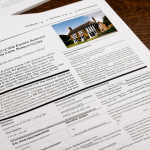Emerging UK Building Regulations and Their Immediate Impact
Recent UK building regulations have introduced stringent requirements that significantly reshape the property investment landscape. These laws emphasize enhanced energy efficiency, fire safety, and accessibility standards. For property owners, the property portfolio impact is immediate and multifaceted, affecting both operational costs and asset valuations.
One major regulation mandates the reduction of carbon emissions from existing buildings, directly influencing renovation and maintenance decisions across portfolios. Such requirements compel investors to prioritize sustainable upgrades, which, while initially costly, are essential for compliance and long-term viability. Additionally, stricter fire safety protocols require comprehensive audits and possible structural changes, further affecting property portfolio impact by increasing management complexity and expenditure.
Also read : Assessing how future property tax changes will affect uk buy-to-let investors
Initial challenges for investors include navigating the variation in regulation timing across regions and property types. Managing updates without disrupting occupancy or cash flow demands careful planning. Furthermore, the evolving nature of regulations necessitates continuous monitoring to avoid lapses that could incur penalties or diminish property value. Understanding these dynamics ensures better preparedness and strategic alignment with recent UK property laws.
Practical Strategies for Portfolio Adaptation
Aligning assets with evolving standards
In the same genre : Discover the financial perks: unveiling the benefits of uk co-living spaces
Adapting property portfolios effectively requires a proactive regulatory response centered on comprehensive compliance strategies. The first crucial step is conducting a thorough audit of each asset against current UK building regulations. This assessment identifies gaps where properties fall short of recent UK property laws, enabling targeted interventions rather than costly blanket renovations.
Key steps for aligning assets with compliance include upgrading insulation systems, installing approved fire safety mechanisms, and ensuring accessibility standards are met. These improvements not only satisfy immediate legal requirements but also enhance overall market attractiveness, mitigating the property portfolio impact from non-compliance.
Future-proofing investments involves anticipating regulatory trends and integrating scalable, flexible technologies that accommodate stricter standards yet to be enacted. For example, adopting modular energy-saving installations allows properties to adapt as carbon reduction targets intensify. This strategy minimizes repeated disruptions and spreads renovation expenditure over time.
Risk mitigation also plays a vital role. Establishing a centralized compliance tracking system enables timely responses to regulatory amendments. Regular training for property managers ensures consistent understanding of evolving rules, reducing risks associated with misinterpretation or oversight. By embedding these strategies, investors safeguard long-term portfolio value and maintain resilience against regulatory shifts.
Timeline and Checklist for Regulatory Compliance
A clear roadmap to meet evolving standards
Understanding the building regulation timeline is essential for effective management of property portfolios under the latest recent UK property laws. Key deadlines generally focus on carbon reduction targets and fire safety upgrades, with staggered implementation dates depending on property types and regions. Property owners must track these dates precisely to avoid last-minute compliance crises and costly penalties.
A practical compliance checklist begins with a detailed review of each asset’s current status against new UK building regulations. This includes verifying insulation effectiveness, fire safety certification, and accessibility features. Property managers should prioritize urgent upgrades identified in this audit and schedule subsequent phases in line with regulatory deadlines.
Common pitfalls include underestimating the time needed for planning permissions and procurement, which can delay essential improvements. Another frequent challenge is misinterpreting evolving regulatory language, underscoring the importance of ongoing education and consultation with legal or industry specialists. By adhering to a structured property owner guidance regime encompassing these actions, investors can minimize risks and maintain portfolio integrity amid continuous regulatory change.
Financial and Operational Consequences of Non-Compliance
The critical costs of neglecting UK building regulations
Failing to comply with UK building regulations carries significant financial risks for property investors and owners. Penalties can include hefty fines that escalate with the duration and severity of non-compliance. These fines often arise from breaches of energy efficiency mandates or fire safety protocols under the recent UK property laws. For example, missing deadlines for carbon emissions reductions may trigger regulatory sanctions that erode profit margins.
Beyond fines, the operational impact of non-compliance can be profound. Buildings subject to delayed or incomplete upgrades may face enforced closures or restrictions, disrupting tenant occupancy and income streams. Such operational disruptions amplify costs through emergency repairs, increased insurance premiums, and potential legal liabilities. The ripple effect impacts not only immediate cash flow but also investor confidence.
In the long term, ignoring compliance obligations depreciates asset value. Properties without necessary certifications or failing to meet energy and safety standards become less desirable in the market. This directly diminishes resale opportunities and investor returns, creating a negative feedback loop on the entire property portfolio impact. Moreover, future regulatory changes could impose retroactive requirements, intensifying costs for complacent owners.
Proactively addressing these risks through timely compliance is therefore essential. Investors must weigh the cost of upgrades against the escalating financial risks and operational fallout from neglect. Prioritizing regulatory adherence safeguards portfolio stability and supports sustainable investment growth.
Emerging UK Building Regulations and Their Immediate Impact
Recent changes in UK building regulations center on enhanced energy efficiency targets, stricter fire safety mandates, and improved accessibility requirements. These recent UK property laws are designed to accelerate carbon reduction efforts and increase occupant safety, reflecting governmental priorities on sustainability and risk mitigation.
The property portfolio impact is significant, with immediate effects felt in renovation timelines, compliance costs, and asset management practices. Property owners must now evaluate their current holdings against these tighter standards, as non-compliance could result in penalties or diminished asset values. For instance, carbon emissions targets require retrofitting older buildings with improved insulation and low-emission heating systems, posing budget and scheduling challenges.
Early obstacles faced by investors include interpreting overlapping regulation phases and managing uneven implementation across regions. Coordinating upgrades without tenant disturbances requires delicate planning. Furthermore, the complexity of new standards demands specialized expertise, pushing property owners to engage consultants or legal advisors. These hurdles underscore the evolving landscape of UK building regulations and their profound property portfolio impact under the latest recent UK property laws.







